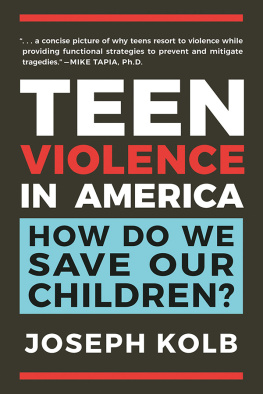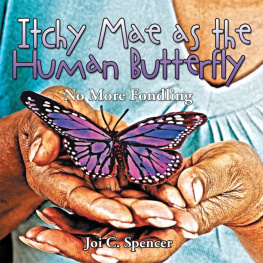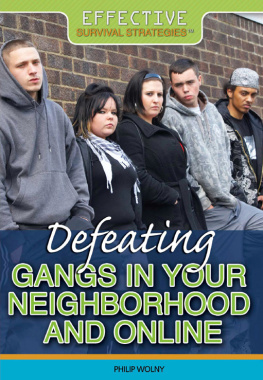
SOCIAL IDENTITIES
General Editors: Shirley Ardener, Tamara Dragadze and Jonathan Webber
Based on a prominent Oxford University seminar founded over two decades ago by the social anthropologist Edwin Ardener, this series focuses on the ethnic, historical, religious and other elements of culture that give rise to a social sense of belonging, enabling individuals and groups to find meaning both in their own social identities and in what differentiates them from others. Each volume is based on one specific theme that brings together contemporary material from a variety of cultures.
Volume 1
Changing Sex and Bending Gender
Alison Shaw and Shirley Ardener
Volume 2
Medical Identities: Healing, Well Being and Personhood
Kent Maynard
Volume 3
Professional Identities: Policy and Practice in Business and Bureaucracy
Shirley Ardener and Fiona Moore
Volume 4
The Discipline of Leisure: Embodying Cultures of Recreation
Simon Coleman and Tamara Kohn
Volume 5
Where Humans and Spirits Meet: The Politics of Rituals and Identified Spirits in Zanzibar
Kjersti Larsen
Volume 6
Out of Place: Madness in the Highlands of Papua New Guinea
Michael Goddard
Volume 7
Youth Gangs and Street Children: Culture, Nurture and Masculinity in Ethiopia
Paula Heinonen
YOUTH GANGS AND STREET CHILDREN
CULTURE, NURTURE AND MASCULINITY IN ETHIOPIA
Paula Heinonen
First published in 2011 by
Berghahn Books
www.berghahnbooks.com
2011 Paula Heinonen
First paperback edition published in 2013
All rights reserved. Except for the quotation of short passages for the purposes of criticism and review, no part of this book may be reproduced in any form or by any means, electronic or mechanical, including photocopying, recording, or any information storage and retrieval system now known or to be invented, without written permission of the publisher.
Library of Congress Cataloging-in-Publication Data
Heinonen, Paula.
Youth gangs and street children : culture, nurture and masculinity in Ethiopia / Paula Heinonen. 1st ed.
p. cm. (Social identities ; 7)
Includes bibliographical references and index.
ISBN 978-0-85745-098-2 (hardback : alk. paper) ISBN 978-0-85745-099-9 (institutional ebook) ISBN 978-1-78238-132-7 (paperback : alk. paper) ISBN 978-1-78238-133-4 (retail ebook)
1. GangsEthiopia. 2. Street childrenEthiopia. 3. EthiopiaSocial conditions21st century. 4. EthiopiaSocial life and customs. I. Title.
HV6439.E78H45 2011
362.740963dc22
2010050321
British Library Cataloguing in Publication Data
A catalogue record for this book is available from the British Library
Printed in the United States on acid-free paper.
ISBN: 978-1-78238-132-7 paperback ISBN: 978-1-78238-133-4 retail ebook
For Diego and Mika
ACKNOWLEDGEMENTS
I owe an immense debt to the children, parents and others who welcomed me into their families and communities. The narrated facts are theirs. Any mistake in contextualising and interpretation are mine. I have written this book as if the street children were my principal critics. I have changed their names to respect their privacy. Love and gratitude to Diego Hidalgo, who makes the impossible in my life always possible. To Shirley Ardener, my teacher and friend, who read the original manuscript and told me to publish it and kept on prodding me to get on with it; her encouragement and her faith in my possibilities meant an enormous amount to my ability to write this book. To Sian, Lady Crisp, a very good friend, who read the subsequent text at an early stage and saved me from my own mistakes. After reading several draft chapters, she told me: All this is very interesting, but I think that the book you want to write is still in your head. I threw everything out and began all over again. A special thank you to Dr. Tamara Dragadze, my editor, for her very helpful comments and criticisms without which this would not be the book it is now. I would like to thank the Abner Cohen memorial fund for the financial assistance they gave me to complete the manuscript. My deepest thanks to my sisters Theresa, Carla and Luisa, and brother-in-law Dimitri Geralis, each of whom fed my spirit during difficult times; our mother Atsede Demisse and grandmother Mintewab, long departed but never forgotten; our brother and childhood playmate Yonas Haile-Yesus, murdered by the Derg's henchmen in his early twenties and whose memory I took with me to every backstreet of Addis Ababa. Last but not least, Chris Cochran, who also read the original manuscript and successive revisions with the same enthusiasm and constant encouragements.
INTRODUCTION
This book is based on six years of ethnographic research among homeless youth gangs and home-living street children in Addis Ababa. It has evolved over subsequent years of follow-up research and further reflection on the cumulative causes and consequences of persistent poverty and gross inequalities in Ethiopia. It attempts to combine theme, places and the voices of individual children and parents to elucidate the problem surrounding gang life and streetism, without resorting to stereotyping and simplifications. It also deals with socio-economic factors that commonly affect their everyday well-being.
The rapidly expanding population of youth gangs and street children is one of the most disturbing phenomena in the urban centres of the developed and developing world. Such children are found in Bucharest, Rio de Janeiro, Cairo, Accra, Rome and London. Globally, youth gangs and street children are considered as children whose lives involve a constant state of destitution, violence and criminality. They are seen as a serious threat to society and in need of heavy-handed intervention, stabilization and control by a concerned adult world. As part of the vulnerable categories of young lives, whose apparent plight require international attention, they have become a focal point for social and material development concerns. This has contributed to their institutional segregation within development agencies such as UNICEF, Save the Children and other NGOs.
The attribution of a negative signifier to a social group creates that social group. For example, in the UK, politicians, the media, academics and NGOs, through their constant advertising of the plight of children in order to raise funds, play a role in influencing our attitudes towards destitute children, street children and youth gangs. It is easy to spot the same rhetorical themes re-emerging. This is because the messages they promote can be conflicting and project a plethora of injustices. They range from poverty, to child neglect and abuse, to domestic violence, lack of good parenting by single mothers, poor health care, lack of clean water and sanitation, low education provision and more recently lack of leisure facilities and absentee fathers. The suggested solution has been a combination of more social welfare provision, tough love and/or the long arm of the law. The recent alarming media coverage of youth gangs and knife murders in the UK attests to this. The British government has recently unveiled a 100 million Youth Crime Action Plan, which is meant to address antisocial behaviour, victim support and sentencing. The plan is also expected to tackle inadequate parenting and the problem of absentee fathers under its Family Intervention Projects (FIPS) which work intensively with the most problematic families, and an incumbency on parents to ensure that their children serve community sentences or risk jail themselves (







